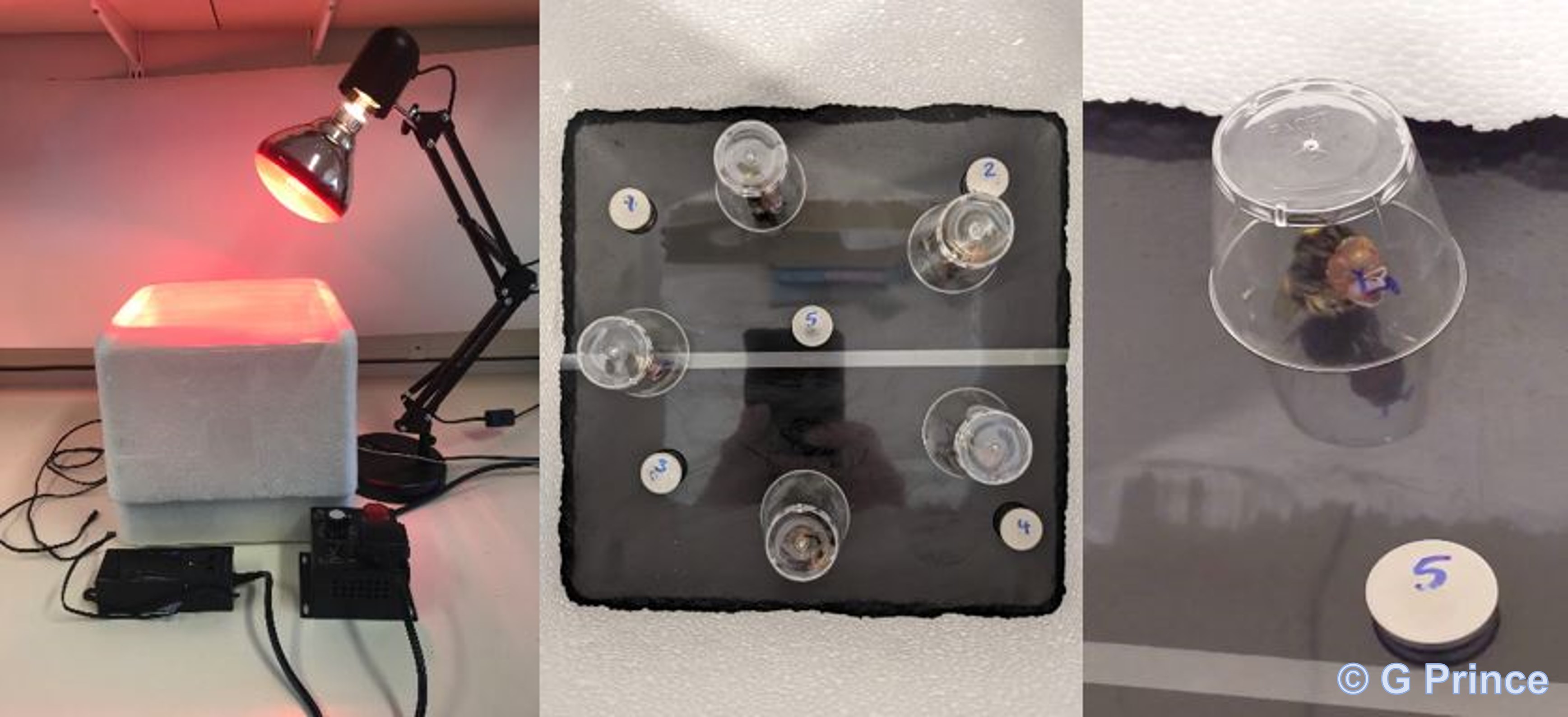Please click here to access the main AHDB website and other sectors.
- Home
- Knowledge library
- Effect of high temperature on within-hive activity of Bombus terrestris
Effect of high temperature on within-hive activity of Bombus terrestris
Read about the studies carried out to examine the effective of temperature on the within-hive activity of Bombus terrestris.
What is thermoregulation?
Bombus terrestris, collectively thermoregulate their nests in response to cold and heat in order to maintain a relatively constant temperature for brood rearing. In hot conditions, they cool the nest by fanning, which helps maintain a stable temperature for brood rearing. In the wild, the nest temperature is kept within a narrow range independent of the ambient air temperature. For example, brood temperatures measured within a wild B. terrestris nest ranged from 31.3 to 33.4 °C despite ambient air temperatures varying from 13.2 to 34.4°C (Weidenmuller et al., 2002).
At extreme ambient conditions, bumblebees spend more time on thermoregulation and less time on other activities such as brood maintenance and foraging (Vogt, 1986). One possible explanation for the poor pollination performance observed with Bta in tomato crops during hot weather is that they are more likely to switch to thermoregulation activities within the hive.
Our studies in 2021
As a first step, a thorough literature search was completed to ensure that we had all the published information on this subject and that information is summarised within the main project report. We then ran a set of pilot studies and thereby developed a novel method of observing the effects of elevated temperatures on the behaviour of individual bumblebees. This method was subsequently used to compare the temperature responses of Bta and Btt/Btd.
Adult bumblebees of known weight were placed individually under plastic ‘shot glass’ cups contained within an insulated box of expanded polystyrene and covered by a clear plastic lid. Each cup contained a pea-sized ball of bumblebee wax which served as a ‘brood dummy’ to help instigate fanning behaviour. The bees were acclimatized at 25°C for 10 minutes prior to the experiment. Heat was provided using a Philips BR125 Industrial Heat Infra Red incandescent reflector lamp (IR 250w E27 230-250v, dimmable) placed 30 cm above the bees and powered through mains electricity (240V ac) via a digital voltmeter constructed for this specific purpose (Figure 1). The temperature was increased by 1°C every minute and the time at which the bees started fanning and / or died were recorded.
The temperatures at which fanning began for individual bees ranged from 28.7 to 34.3°C (Bta) and 26.4 to 37.2°C (Btt/Btd). There was no difference between Bta and Btt/Btd in the average temperature at which fanning began (31.6°C and 31.9°C respectively). There was no observed difference between Bta and Btt/Btd in the average temperature at which bees died (43°C). There was no correlation between fanning temperature and bee weight.
Conslusion
There is no evidence to date to show a marked difference between Bta and Btt/Btd in thermoregulation activities within the hive that would be more detrimental to colony development or to the upper lethal temperature for adult bees.
 G Prince
G Prince
Figure 1. Laboratory equipment used to assess fanning behaviour of bumblebees
Useful links
Got a question? Ask a member of the team
Authors
The content on this page was authored for AHDB by Dr D Chandler, Mrs G Prince and Dr Rob Jacobson (Rob Jacobson Consultancy Ltd).

